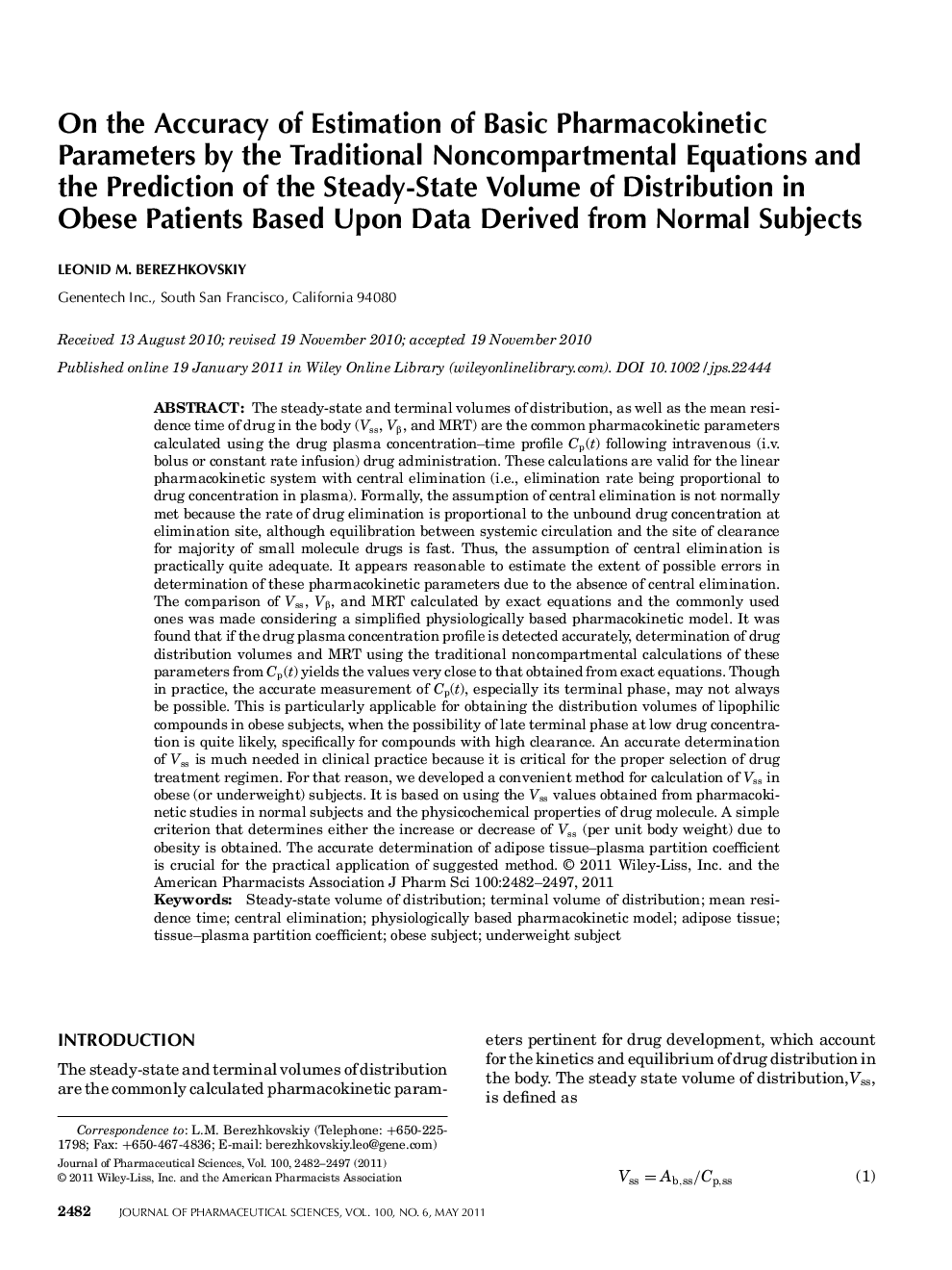| Article ID | Journal | Published Year | Pages | File Type |
|---|---|---|---|---|
| 2486454 | Journal of Pharmaceutical Sciences | 2011 | 16 Pages |
Abstract
The steady-state and terminal volumes of distribution, as well as the mean residence time of drug in the body (Vss, Vβ, and MRT) are the common pharmacokinetic parameters calculated using the drug plasma concentration-time profile Cp(t) following intravenous (i.v. bolus or constant rate infusion) drug administration. These calculations are valid for the linear pharmacokinetic system with central elimination (i.e., elimination rate being proportional to drug concentration in plasma). Formally, the assumption of central elimination is not normally met because the rate of drug elimination is proportional to the unbound drug concentration at elimination site, although equilibration between systemic circulation and the site of clearance for majority of small molecule drugs is fast. Thus, the assumption of central elimination is practically quite adequate. It appears reasonable to estimate the extent of possible errors in determination of these pharmacokinetic parameters due to the absence of central elimination. The comparison of Vss, Vβ, and MRT calculated by exact equations and the commonly used ones was made considering a simplified physiologically based pharmacokinetic model. It was found that if the drug plasma concentration profile is detected accurately, determination of drug distribution volumes and MRT using the traditional noncompartmental calculations of these parameters from Cp(t) yields the values very close to that obtained from exact equations. Though in practice, the accurate measurement of Cp(t), especially its terminal phase, may not always be possible. This is particularly applicable for obtaining the distribution volumes of lipophilic compounds in obese subjects, when the possibility of late terminal phase at low drug concentration is quite likely, specifically for compounds with high clearance. An accurate determination of Vss is much needed in clinical practice because it is critical for the proper selection of drug treatment regimen. For that reason, we developed a convenient method for calculation of Vss in obese (or underweight) subjects. It is based on using the Vss values obtained from pharmacokinetic studies in normal subjects and the physicochemical properties of drug molecule. A simple criterion that determines either the increase or decrease of Vss (per unit body weight) due to obesity is obtained. The accurate determination of adipose tissue-plasma partition coefficient is crucial for the practical application of suggested method. © 2011 Wiley-Liss, Inc. and the American Pharmacists Association J Pharm Sci 100:2482-2497, 2011
Keywords
Related Topics
Health Sciences
Pharmacology, Toxicology and Pharmaceutical Science
Drug Discovery
Authors
Leonid M. Berezhkovskiy,
